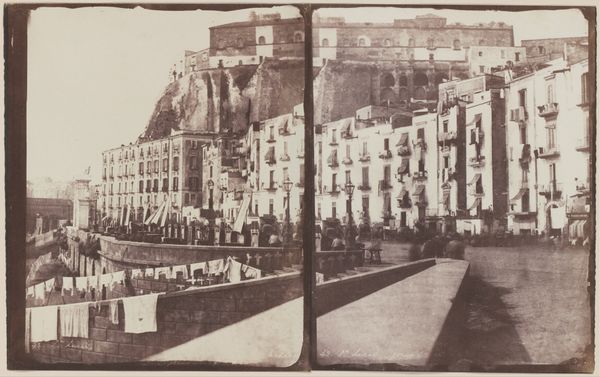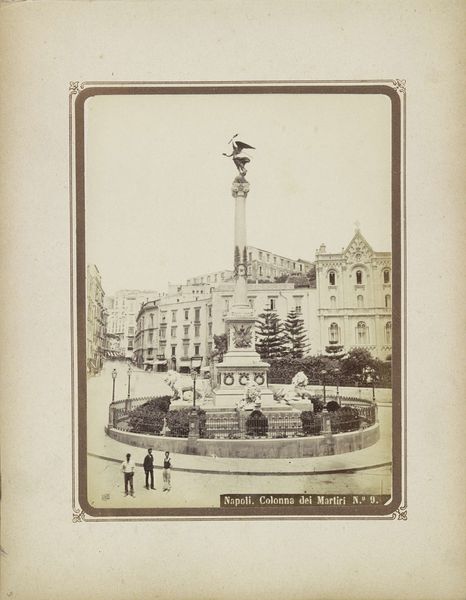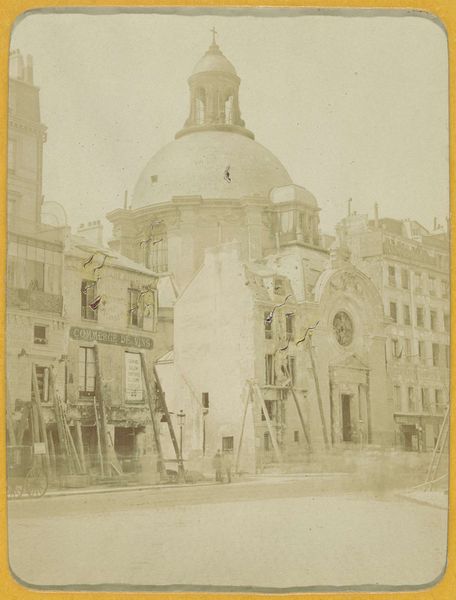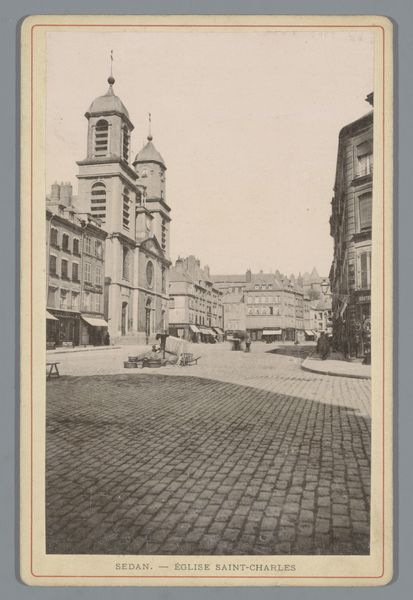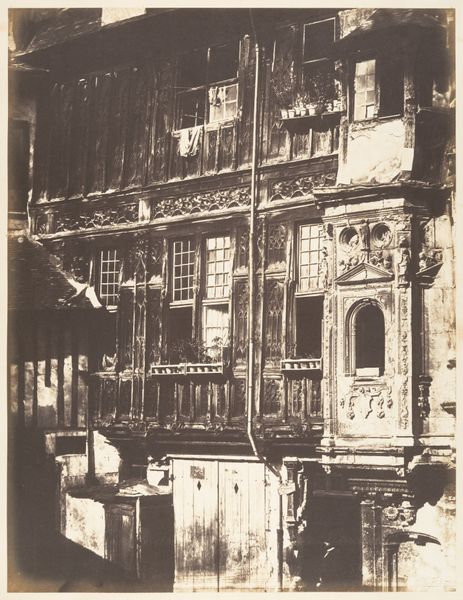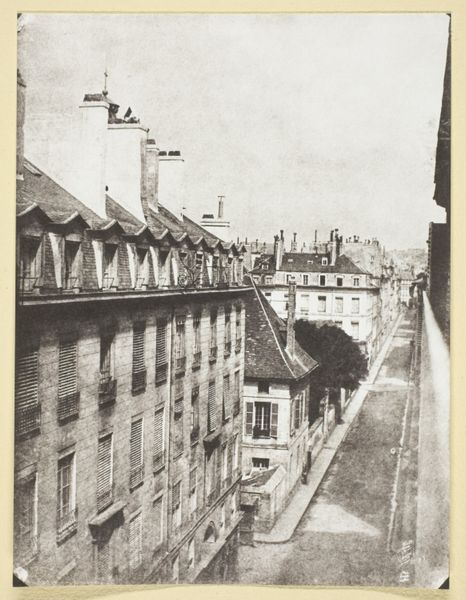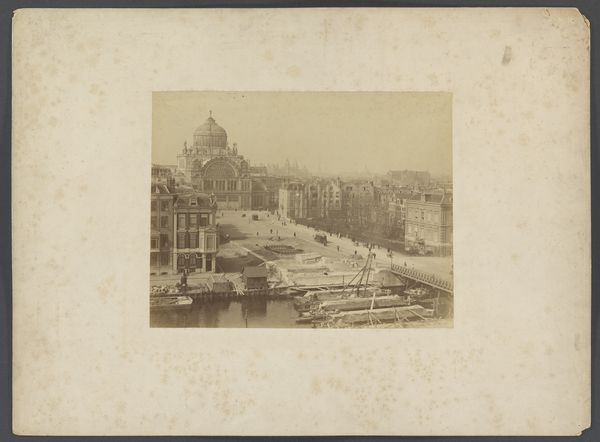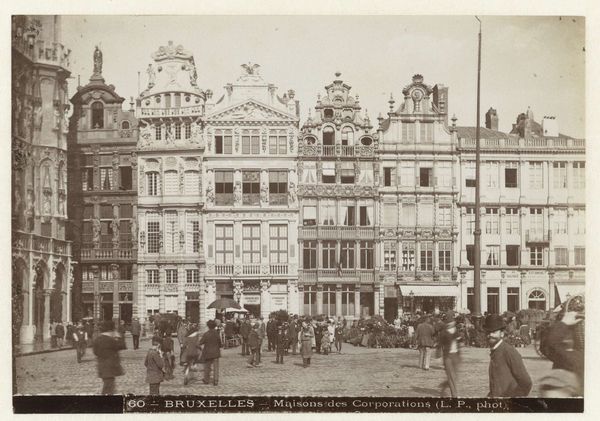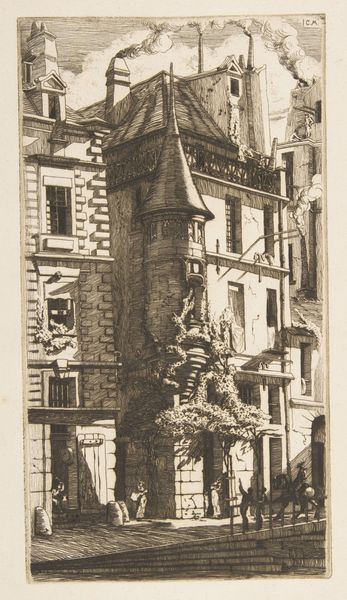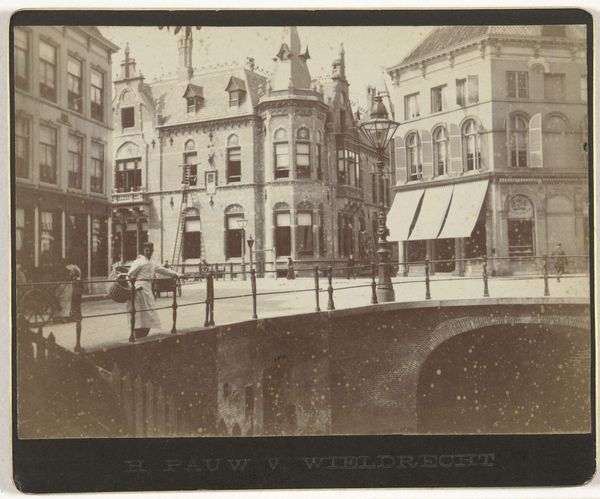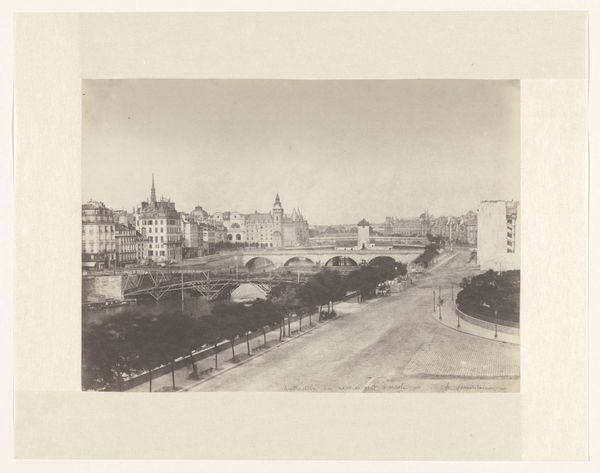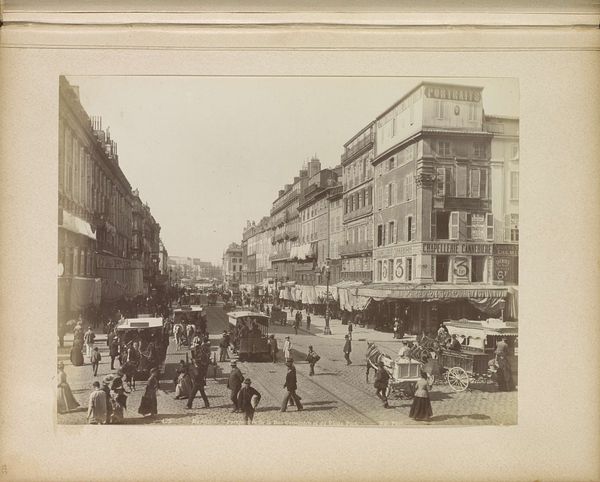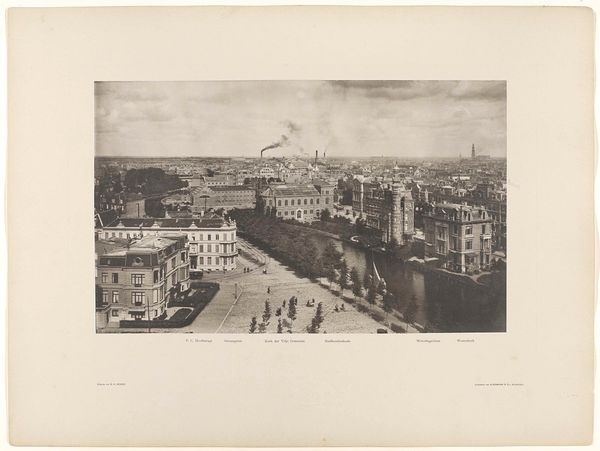
print, daguerreotype, paper, photography
#
aged paper
#
toned paper
#
16_19th-century
#
pale palette
#
muted colour palette
#
photo restoration
# print
#
war
#
landscape
#
daguerreotype
#
paper
#
photography
#
romanticism
#
19th century
#
cityscape
#
realism
Dimensions: 21.5 × 16.9 cm (image); 22.5 × 18.5 cm (paper)
Copyright: Public Domain
Curator: I'm drawn to the photograph's quiet solemnity. It almost feels like a faded memory, or a dream half-remembered. Editor: It's a daguerreotype titled "St. Lucia, Naples" taken in 1846 by Rev. Calvert R. Jones, capturing the coastal city nestled beneath a dramatic hillside fortress. Curator: Yes, the architectural layering is quite remarkable – buildings cascading down to the waterfront, crowned by what appears to be a medieval fortress. It makes me think about the various conquerors, inhabitants and narratives accumulated and embedded into this particular place. Editor: The mundane disrupts the monumental, doesn’t it? The clothes hanging out to dry create an interesting juxtaposition with the grand architecture. They're incredibly evocative of the everyday realities of the people who lived in the shadows of such immense power structures. Who were these women and men? Were they affected by ongoing unrest or simply by trying to put food on the table? Curator: Absolutely. Laundry has its own history, a symbol of domestic labor, women’s work, yet hanging publicly and, on that level, signaling resilience. Think of how the immaculate whiteness might have been a marker of cleanliness, an aspiration of a more modern lifestyle. In contrast with the heavy presence of architecture above, we could ponder what that weight and visual authority suggest for the people, so many, dwelling below, obscured within this composition? Editor: Indeed, photography emerged during an age marked by industrialization and significant social shifts. Viewing it through that lens underscores photography’s complex position within historical and societal frameworks. What do you suppose the act of fixing this place meant, back in 1846? Curator: It served as a monument. The very act of creating a lasting image imbues its subjects with cultural capital. And, photography transformed how individuals visualized reality – offering a view to previously unseeable worlds. I wonder what Jones was trying to document or impart through this photograph, aside from aesthetic or historical value. It reveals the layers of human endeavor built into the city. It shows our tenacity, how we live on, wash our clothes, in any scenario. Editor: Looking at this image has deepened my consideration of Naples as not just a location but also a crucible of histories and experiences. Thank you. Curator: Likewise. Thinking about time and continuity through imagery never fails to illuminate new perspectives.
Comments
No comments
Be the first to comment and join the conversation on the ultimate creative platform.
